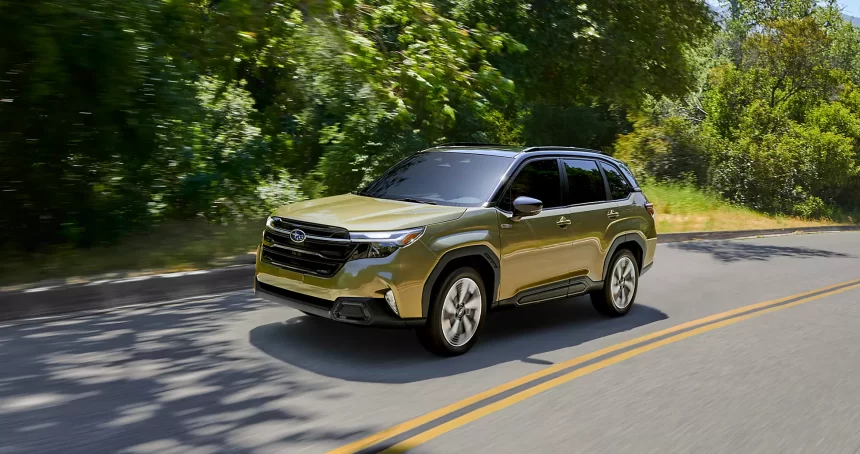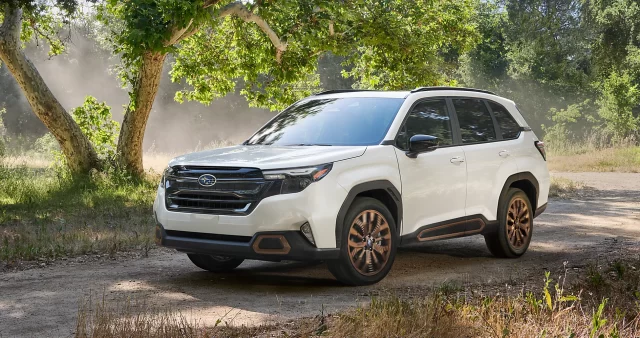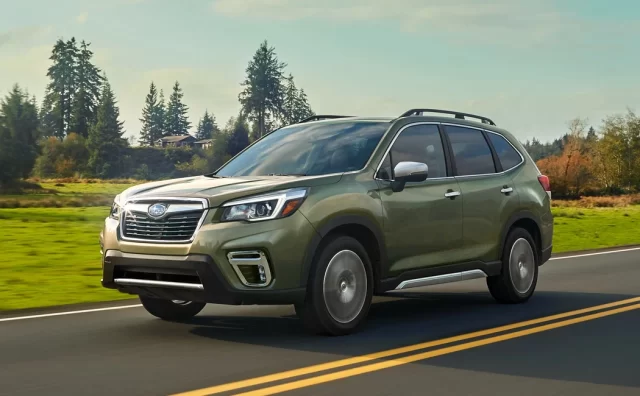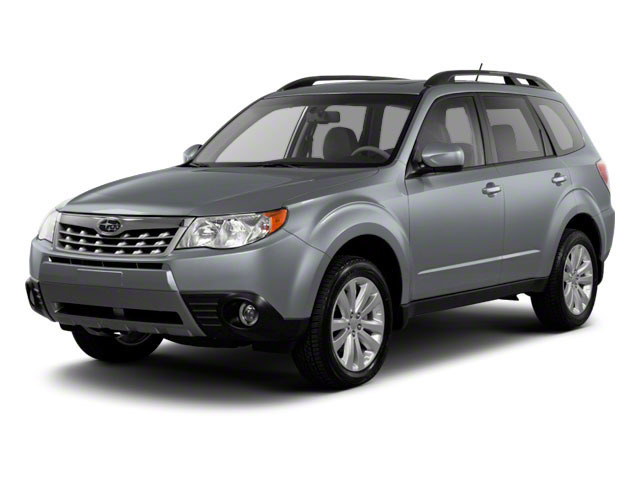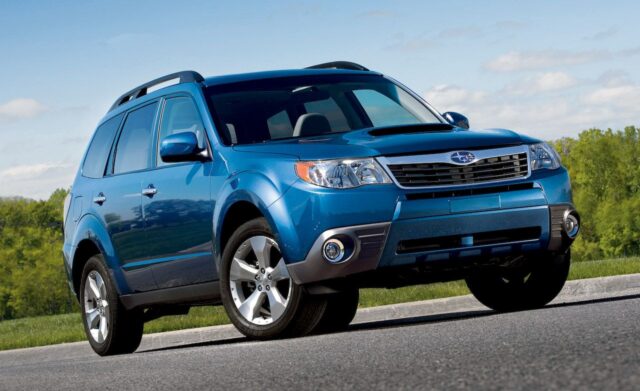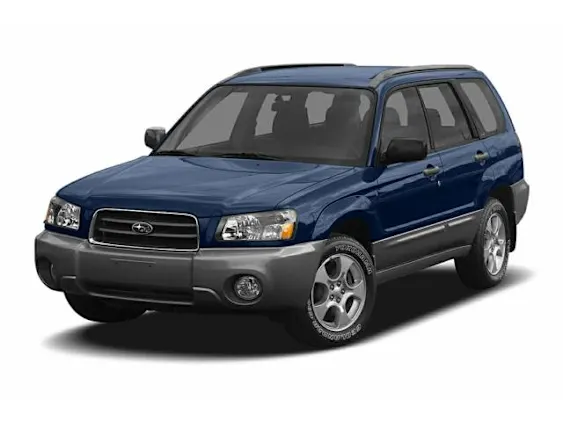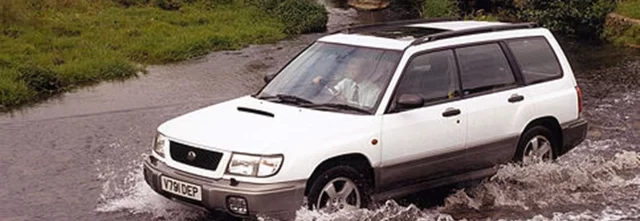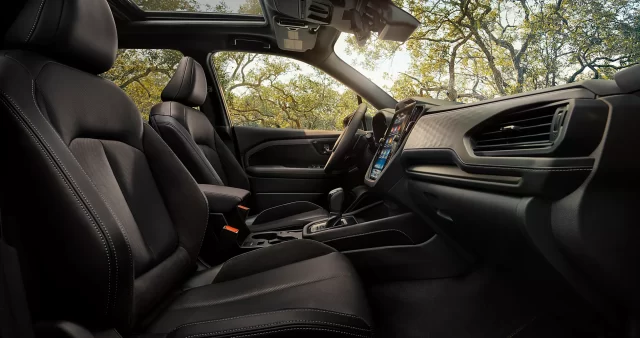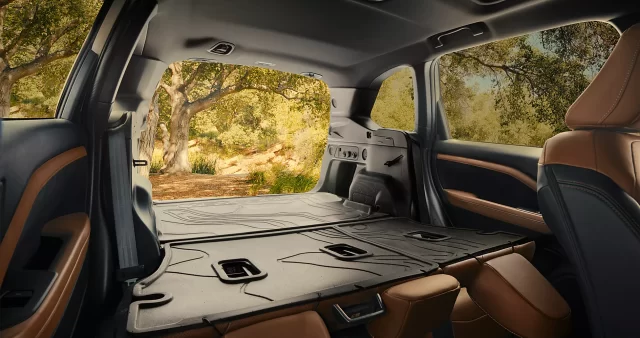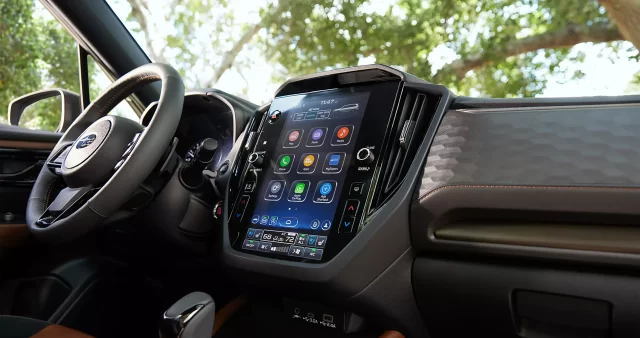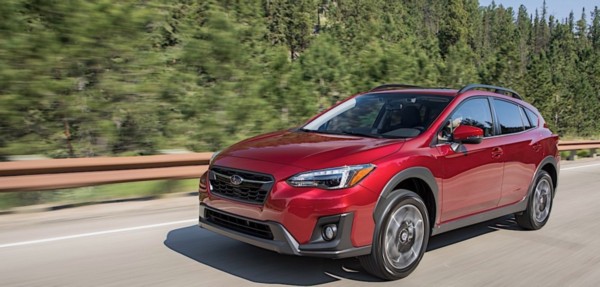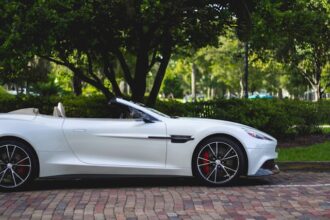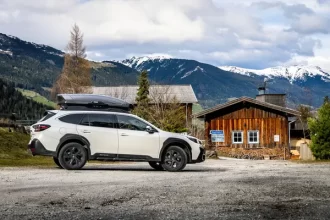The 2025 Subaru Forester marks the arrival of a thoughtfully evolved SUV in a fiercely competitive segment. Known for its legendary all-wheel-drive capability, impressive safety ratings, and practical design, the Forester has consistently appealed to families, commuters, and outdoor enthusiasts alike. The latest generation brings enhanced technology, improved refinement, and a glimpse at Subaru’s electrified future.
In this comprehensive review, we’ll explore everything from the Forester’s mechanical architecture to its day-to-day usability. Whether you’re a longtime Subaru loyalist or a newcomer considering your next compact SUV, this guide will help you understand what makes the 2025 Forester a standout choice in the American market.
History of the Forester
The Subaru Forester made its global debut in 1997 as a compact crossover SUV based on the Impreza platform. From the beginning, the Forester was designed to combine car-like driving dynamics with the all-weather versatility of an SUV—positioning itself uniquely between sedans and traditional SUVs. It quickly gained popularity in North America due to its standard all-wheel-drive, generous ground clearance, and practical size.
The first-generation (1997–2002) featured a boxy, utilitarian design and was praised for its low center of gravity and predictable handling. In the second generation (2003–2008), Subaru introduced turbocharged XT models, further enhancing the Forester’s reputation for being both capable and fun to drive. The third generation (2009–2013) adopted a larger, more family-friendly profile while introducing greater ride comfort and safety features like side-curtain airbags.
By the fourth generation (2014–2018), the Forester had become one of Subaru’s bestsellers in the U.S., thanks to the debut of EyeSight Driver Assist Technology and improved fuel efficiency. The fifth generation (2019–2024) transitioned to the Subaru Global Platform, enhancing structural rigidity and crash safety. It also marked the shift to naturally aspirated engines and phasing out of turbo variants, focusing on mainstream appeal and reliability.
The sixth generation, arriving as the 2025 model year, builds on this foundation with a redesigned exterior, upgraded cabin tech, and anticipated hybrid options. It continues the brand’s focus on safety, AWD confidence, and sensible utility, appealing to both longtime Subaru owners and first-time SUV buyers alike.
Engine and Transmission Details
The 2025 Forester is powered by a naturally aspirated 2.5-liter BOXER four-cylinder engine producing 182 horsepower and 176 lb-ft of torque. Subaru’s horizontally opposed engine design contributes to a low center of gravity, improving handling and stability. Paired with a Lineartronic CVT (Continuously Variable Transmission), the powertrain emphasizes smooth acceleration and fuel economy. A manual-shift mode with simulated gear ratios is available for those who prefer a more connected driving experience.
Subaru is also preparing to release a hybrid powertrain later in 2025, which will integrate electric assistance for improved fuel economy and lower emissions while retaining the symmetrical all-wheel-drive layout.
Safety Ratings and Crash Testing
The 2025 Subaru Forester earns top marks from both the NHTSA and IIHS. It achieved a 5-star overall rating in NHTSA testing and was awarded a Top Safety Pick+ designation by IIHS. Standard safety features include EyeSight Driver Assist Technology, rear cross-traffic alert, blind-spot detection, lane departure warning, and a new Emergency Automatic Steering system that helps avoid collisions.
Forester in Daily Use: Urban and Rural Driving
In city environments, the Forester’s tight turning radius and responsive steering make parking and navigating tight streets easy. Start-stop functionality enhances fuel savings in stop-and-go traffic, while the elevated driving position gives excellent visibility. On rural roads and trails, the ground clearance and AWD system shine, ensuring secure grip on dirt, gravel, and wet pavement.
Owners appreciate the balanced ride and the minimal road noise, making long commutes and road trips equally pleasant. The rear seat legroom and wide-opening doors are especially praised by families and pet owners.
What’s Next for the Subaru Forester?
Subaru has hinted at a fully electric Forester expected by 2027, as part of their commitment to electrifying 40% of their lineup. This model is expected to share architecture with Toyota’s bZ platform while preserving Subaru’s AWD engineering. Until then, updates to the hybrid system, further safety integration, and incremental tech improvements are expected in the annual model refreshes.
For adventure seekers, Subaru may expand the Wilderness trim to the Forester lineup, adding beefier off-road enhancements and aesthetic cues that differentiate it from city-centric trims.
With these developments, the Forester is positioned not just as a staple compact SUV but as a vehicle ready for a more electrified and connected future.
Exterior and Design of the 2025 Forester
The 2025 Subaru Forester receives a fresh exterior update that reinforces its rugged yet refined identity. With sharper lines, a bolder grille, and more angular LED headlights, the new design emphasizes a stronger road presence while retaining the model’s practical proportions. Subaru’s design team has focused on improving aerodynamics and visual balance, making the Forester more modern without alienating its core audience.
The front fascia has been reworked to appear more upright and muscular, especially on Sport and Touring trims which feature black or dark chrome accents. Wheel arches are now slightly flared, adding a subtle off-road character. Wheel options range from 17-inch alloys on the Base trim to 19-inch premium wheels on upper trims, with new finishes introduced for 2025.
Rear styling also sees a refresh, with redesigned taillights and a more integrated bumper structure. A roof spoiler adds a sporty touch, while roof rails come standard across the lineup for added utility. Subaru offers nine exterior color options in the 2025 model, including new shades like Geyser Blue and Autumn Green Metallic.
- LED headlights: Standard on all trims, adaptive on Touring
- Roof rails: Standard, with tie-down points for added functionality
- Power tailgate: Available from Premium trim upward
- Ground clearance: 8.7 inches across all trims
Overall, the design changes strike a balance between utility, aesthetics, and aerodynamic efficiency, ensuring the Forester remains both stylish and adventure-ready.
Interior and Comfort
The 2025 Subaru Forester offers one of the most comfortable and practical interiors in its class. Designed with functionality and everyday usability in mind, the cabin feels airy thanks to large windows and a tall roofline. The upright seating position enhances visibility, while the generous legroom and headroom make it ideal for both short trips and long journeys.
Interior materials vary by trim, with the Base and Premium models featuring durable cloth upholstery, while the Limited and Touring trims offer leather-trimmed seating with contrasting stitching. The Touring adds ventilated front seats and Nappa leather, elevating it into near-luxury territory for a compact SUV.
Subaru’s attention to ergonomics is evident in the Forester’s intuitive control layout, high-mounted touchscreen, and physical buttons for frequently used climate functions. The front seats offer ample lumbar support and multiple power adjustment options from the Premium trim upward. Heated front seats are standard on most trims, with heated rear seats available on the Limited and Touring.
For cargo versatility, the Forester provides 29.6 cubic feet of space behind the rear seats and up to 74.2 cubic feet when the second row is folded flat. A power rear liftgate with height memory is available on higher trims, and the cargo area includes hooks, underfloor storage, and an optional waterproof tray.
- Panoramic moonroof: Available on Premium and above
- Dual-zone automatic climate control: Standard from Limited trim
- Rear seat legroom: 39.4 inches
- Quietness: Enhanced sound insulation, acoustic windshield glass
Whether you prioritize family-friendly space or quiet refinement, the 2025 Forester’s interior delivers a balanced experience tailored to a wide range of drivers.
Performance, Drivetrain, and Fuel Economy
The 2025 Subaru Forester continues to be powered by the brand’s well-known 2.5-liter naturally aspirated BOXER four-cylinder engine. This engine layout not only ensures a lower center of gravity but also offers smoother balance and enhanced handling in a variety of driving conditions. It produces 182 horsepower and 176 lb-ft of torque, making it suitable for most daily driving and light towing scenarios.
The powerplant is paired with Subaru’s Lineartronic® CVT (Continuously Variable Transmission), which mimics stepped gear shifts to reduce the typical “rubber band” feel. A manual mode is available with paddle shifters on higher trims, offering more driver engagement when needed. This setup delivers linear power delivery and contributes to the Forester’s consistent fuel economy.
All models feature Subaru’s Symmetrical All-Wheel Drive (AWD) as standard—a significant advantage over rivals that offer AWD only as an upgrade. Subaru’s system distributes power evenly across all four wheels, improving traction on slippery roads, uneven terrain, or during inclement weather.
Subaru’s X-MODE® terrain management system, standard on all trims, enhances AWD functionality. It adjusts throttle response, transmission shift points, and traction control to suit snow, mud, or gravel surfaces. Higher trims gain dual-function X-MODE with additional terrain modes.
2025 Subaru Forester Key Performance Specs
| Specification | Value |
|---|---|
| Engine | 2.5L BOXER 4-cylinder |
| Horsepower | 182 hp @ 5,800 rpm |
| Torque | 176 lb-ft @ 4,400 rpm |
| Transmission | Lineartronic CVT with 7-speed manual mode |
| Drivetrain | Symmetrical All-Wheel Drive |
| Fuel Economy (city/hwy/combined) | 26 / 33 / 29 mpg |
| Fuel Tank Capacity | 16.6 gallons |
| Towing Capacity | Up to 1,500 lbs |
| 0–60 mph (est.) | 8.5 seconds |
The upcoming hybrid variant (expected in late 2025) is set to improve efficiency further, targeting over 35 mpg combined while retaining AWD and similar output levels.
Safety and Driver Assistance Features
Subaru has built a reputation for engineering some of the safest vehicles on the road, and the 2025 Forester continues that tradition with a robust suite of active and passive safety systems. All trims come standard with Subaru’s latest-generation EyeSight® Driver Assist Technology, which uses dual-color forward-facing cameras to monitor traffic and help prevent collisions.
Among the key features are:
- Pre-Collision Braking: Automatically applies brakes if a frontal collision seems likely.
- Adaptive Cruise Control: Maintains a safe following distance and can bring the vehicle to a complete stop.
- Lane Departure and Sway Warning: Alerts the driver if the vehicle begins to drift without signaling.
- Lane Keep Assist: Gently nudges the vehicle back into its lane if drifting is detected.
- Emergency Automatic Steering: New for 2025, this system helps avoid frontal collisions by steering around obstacles when braking alone isn’t sufficient.
Higher trims add Blind-Spot Detection with Lane Change Assist, Rear Cross-Traffic Alert, and Reverse Automatic Braking. The Touring trim also includes DriverFocus® Distraction Mitigation System, which uses facial recognition technology to detect signs of fatigue or inattention and alert the driver.
In crash testing, the 2025 Forester received:
- NHTSA Overall Safety Rating: 5 Stars
- IIHS Rating: Top Safety Pick+ (with LED projector headlights on all trims)
Subaru’s comprehensive approach to safety makes the Forester one of the most confidence-inspiring vehicles in its class—ideal for families, new drivers, and anyone who values intelligent accident prevention technology.
Infotainment and Technology
The 2025 Subaru Forester brings meaningful tech upgrades that enhance both convenience and connectivity. Even in the base trim, buyers get a user-friendly infotainment system featuring an 8-inch touchscreen with wired Apple CarPlay and Android Auto. The system includes physical volume and tuning knobs, making it intuitive and safe to use while driving.
Moving up the range, Premium and Sport models include dual-screen setups that separate vehicle controls from media, while the Limited and Touring trims feature Subaru’s new 11.6-inch vertical touchscreen interface—first introduced in the Outback. This screen combines navigation, media, and vehicle settings in one integrated layout with crisp resolution and responsive touch feedback.
The Touring trim adds built-in navigation, voice command recognition, and a premium Harman Kardon 9-speaker audio system with a 576-watt amplifier—perfect for audiophiles. Subaru’s STARLINK suite is included across all trims and offers access to connected services such as remote engine start, climate control via smartphone, stolen vehicle recovery, and over-the-air software updates.
- Apple CarPlay / Android Auto: Standard, wireless on upper trims
- Wi-Fi hotspot: Optional subscription via STARLINK
- USB-A and USB-C ports: Available in front and rear rows
- Digital gauge cluster: Available on Sport and Touring trims
Overall, Subaru’s tech approach is grounded in usability and reliability. While it may not overwhelm with gimmicks, it provides just the right balance of innovation and practicality for real-world use.
Scheduled Maintenance Plan for the 2025 Subaru Forester
Following the manufacturer’s recommended maintenance intervals helps ensure long-term reliability, safety, and warranty coverage. Subaru vehicles are engineered for durability, and adhering to a regular service schedule is essential for protecting your investment.
| Mileage | Maintenance Tasks |
|---|---|
| 6,000 miles (or 6 months) | Oil and filter change, tire rotation, brake inspection, top off fluids |
| 12,000 miles | Repeat 6,000-mile service, check battery, inspect belts and hoses |
| 18,000 miles | Oil/filter, rotate tires, cabin air filter replacement, inspect suspension |
| 24,000 miles | Full inspection, replace engine air filter, CVT fluid check (if towing) |
| 30,000 miles | Oil/filter, tire rotation, replace brake fluid, coolant level check |
| 60,000 miles | Replace spark plugs, coolant flush, transmission fluid replacement, check wheel alignment |
| 90,000 miles | Major inspection, full fluid replacements, brake rotor/pad evaluation |
| Every 6,000 miles thereafter | Repeat oil/filter and tire service, address wear items as needed |
All services should be logged in the vehicle’s maintenance booklet. Using genuine Subaru parts and service at authorized dealerships is recommended to maintain optimal performance and resale value. If you often drive in harsh conditions or tow trailers, more frequent inspections may be advised.
Most Common Replacement Parts with OEM Codes
| Part | OEM Code | Aftermarket Alternatives |
|---|---|---|
| Engine Oil Filter | 15208AA160 | Fram XG7317, Bosch 3330, Mobil M1-108A |
| Cabin Air Filter | 72880FL00A | K&N VF2055, EPAuto CP285 |
| Air Filter (Engine) | 16546AA120 | Fram CA9997, Mann C 37009 |
| Spark Plugs (Set of 4) | 22401AA781 | NGK Iridium IX, Denso PK20TT |
| Front Brake Pads | 26296AE020 | PowerStop Z23-1405, Wagner ThermoQuiet QC1405 |
| Rear Brake Pads | 26696SG000 | Raybestos EHT1405H, Akebono ACT1405 |
| Wiper Blades (Driver/Passenger) | 86532SG011 / 86536SG011 | Bosch ICON 26A / 17B |
| Battery (Group Size 35) | 82100AJ00A | Optima 8020-164, DieHard Gold 35-2 |
These parts are readily available at Subaru dealerships and certified auto parts stores. Using OEM or high-quality aftermarket alternatives ensures performance and warranty compliance. Most owners replace cabin and engine filters every 12,000–15,000 miles, brake pads around 30,000–50,000 miles depending on usage, and spark plugs after 60,000 miles.
Comparison with Rivals: CR-V, RAV4, and CX-5
The compact SUV segment is one of the most competitive in the automotive market, and the 2025 Subaru Forester goes head-to-head with heavyweights like the Honda CR-V, Toyota RAV4, and Mazda CX-5. Each of these models has its own strengths, but the Forester differentiates itself through standard AWD, unmatched visibility, and a spacious interior layout.
Here’s how the 2025 Forester compares to its main competitors:
| Feature | Subaru Forester | Honda CR-V | Toyota RAV4 | Mazda CX-5 |
|---|---|---|---|---|
| Base Engine | 2.5L NA Boxer I4 | 1.5L Turbo I4 | 2.5L NA I4 | 2.5L NA I4 |
| Horsepower | 182 hp | 190 hp | 203 hp | 187 hp |
| Drivetrain | AWD standard | FWD standard, AWD optional | FWD standard, AWD optional | AWD standard |
| Fuel Economy (Combined) | 29 mpg | 30 mpg | 30 mpg | 26 mpg |
| Cargo Volume (Seats Down) | 74.2 cu ft | 76.5 cu ft | 69.8 cu ft | 59.3 cu ft |
| Starting MSRP | $29,995 | $30,850 | $29,625 | $29,300 |
The Forester may not win in raw horsepower or fuel economy, but its full-time AWD, ground clearance, and interior spaciousness make it ideal for outdoor-focused buyers. If all-weather confidence and balanced versatility matter more than aggressive styling or sporty handling, the Forester remains a top pick.
Owner Reviews and Real-World Experience
Subaru Forester owners are among the most loyal in the compact SUV segment—and for good reason. According to surveys from Edmunds and Kelley Blue Book, the 2025 Forester maintains a customer satisfaction rating above 4.5 out of 5 across most metrics, including ride comfort, visibility, and reliability.
Owners often praise the Forester for its “no-nonsense” usability. One common highlight is the vehicle’s exceptional outward visibility—thanks to its tall windows and low beltline—which makes parking and lane changes easier, especially for shorter drivers or seniors.
Another frequently mentioned strength is the balanced ride. The suspension absorbs bumps well without feeling floaty, and the steering feels predictable and reassuring even on dirt roads or during heavy rain. Pet owners also appreciate the flat load floor and optional waterproof cargo tray.
On the downside, a few drivers mention that the CVT can feel sluggish under heavy acceleration, particularly when merging on the highway or climbing steep grades. Some also wish for a more powerful engine option, especially those coming from older XT turbo models.
- Most praised features: AWD performance, visibility, cargo space, reliability
- Common critiques: Modest acceleration, lack of turbo option
- Typical real-world MPG: 28–31 mpg (mixed driving)
- Top demographics: Families, retirees, outdoor enthusiasts, pet owners
Overall, the Forester remains a go-to choice for buyers who value safety, practicality, and long-term dependability over flashy features or sporty performance.

